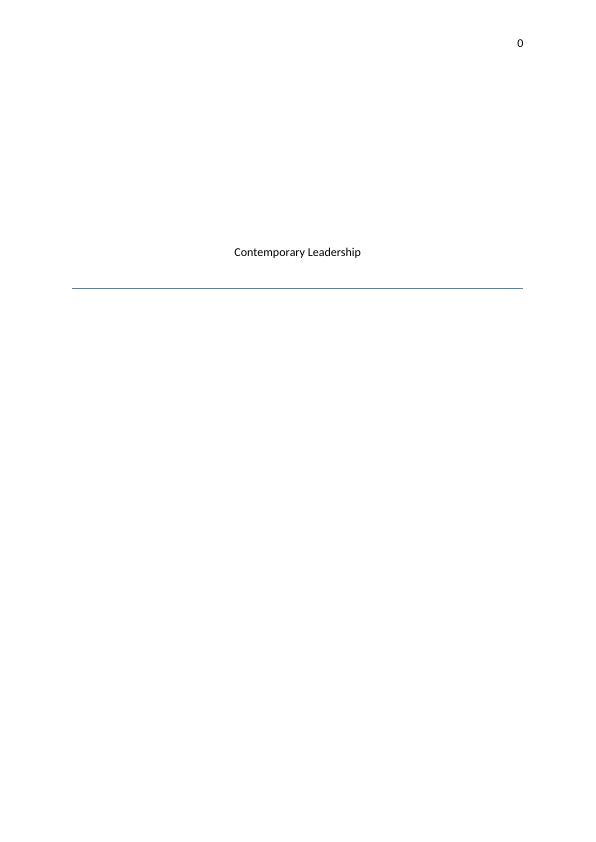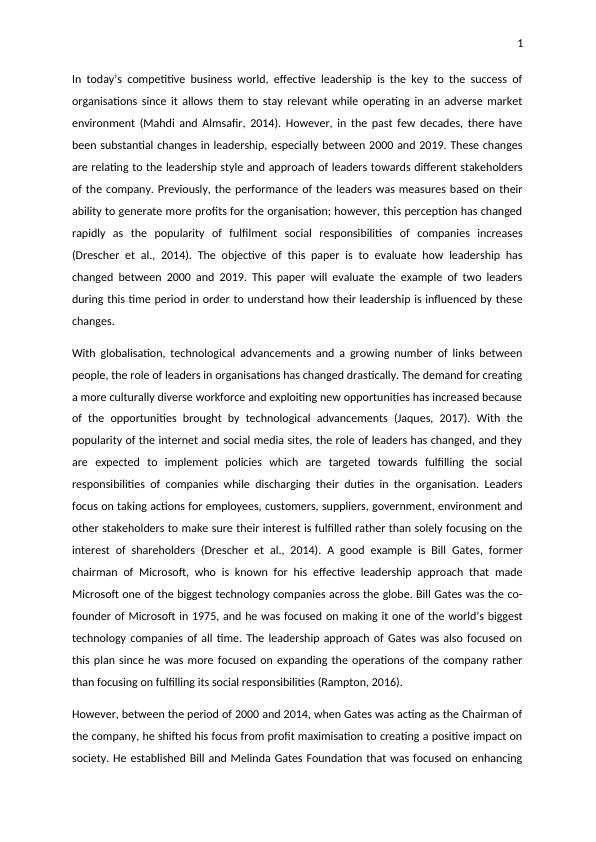Changes in Leadership between 2000 and 2019
6 Pages1340 Words427 Views
Added on 2023-03-31
About This Document
This paper evaluates the changes in leadership styles and approaches between 2000 and 2019, focusing on corporate responsibilities, employee management, diversity promotion, and innovation. It examines the examples of Bill Gates and Reed Hastings to understand the impact of these changes.
Changes in Leadership between 2000 and 2019
Added on 2023-03-31
ShareRelated Documents
End of preview
Want to access all the pages? Upload your documents or become a member.
Changes in Leadership Approach between 2000 and 2019
|12
|767
|286
Bill Gates Biography and Career Development
|17
|1625
|69
Leadership: Overview of Bill Gates' Leadership Style and Challenges Faced
|8
|2086
|451
Leadership Style of Bill Gates: A Presentation
|12
|789
|88
Entrepreneurship and Innovation : Doc
|12
|2562
|71
Leadership Styles and Development Assignment 2022
|20
|814
|15



